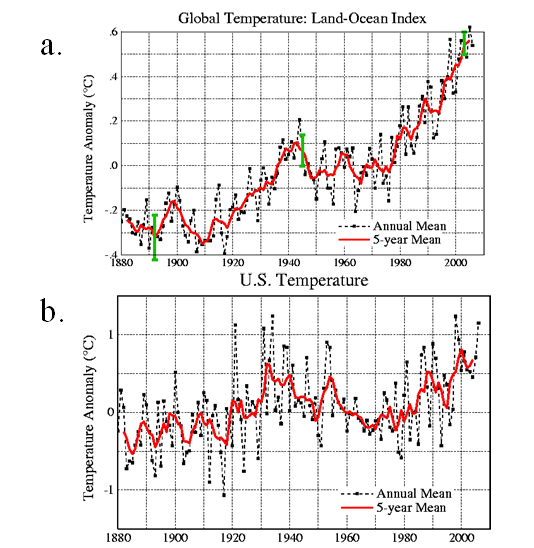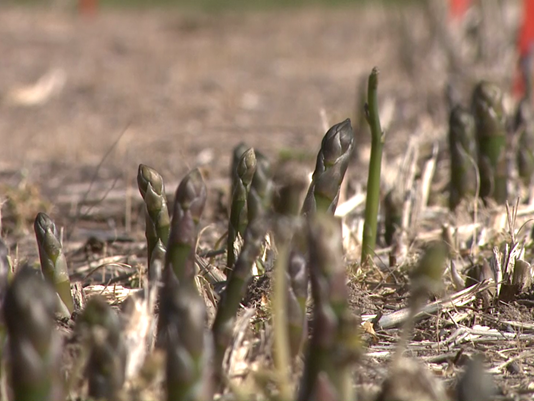Guest essay by Dr. Fred SingerExploring some of the intricacies of GW [Global Warming] science can lead to surprising results that have major consequences. In a recent invited talk at the Heartland Institute's ICCC-12 [Twelfth International Conference on Climate Change], I investigated three important topics:
1. Inconsistencies in the surface temperature record.
2. Their explanation as artifacts arising from the misuse of data.
3. Thereby explaining the failure of IPCC to find credible evidence for anthropogenic global warming (AGW).
A misleading graphIn the iconic picture of the global surface temperature of the 20th century [fig 1, top] one can discern two warming intervals — in the initial decades (1910-42) and in the final decades, 1977 to 2000.
Although these two trends look similar, they are really quite different: the initial warming is genuine, but the later warming is not. What a surprise! I wouldn't exactly call it 'fake,' but it just does not exist; I try to demonstrate this difference as an artifact of the data-gathering process, by comparing with several independent data sets covering similar time intervals.

Fig 1 20th century temps; top—global; bottom– US

Comment: See also: Highly unusual snowfall in Finland?